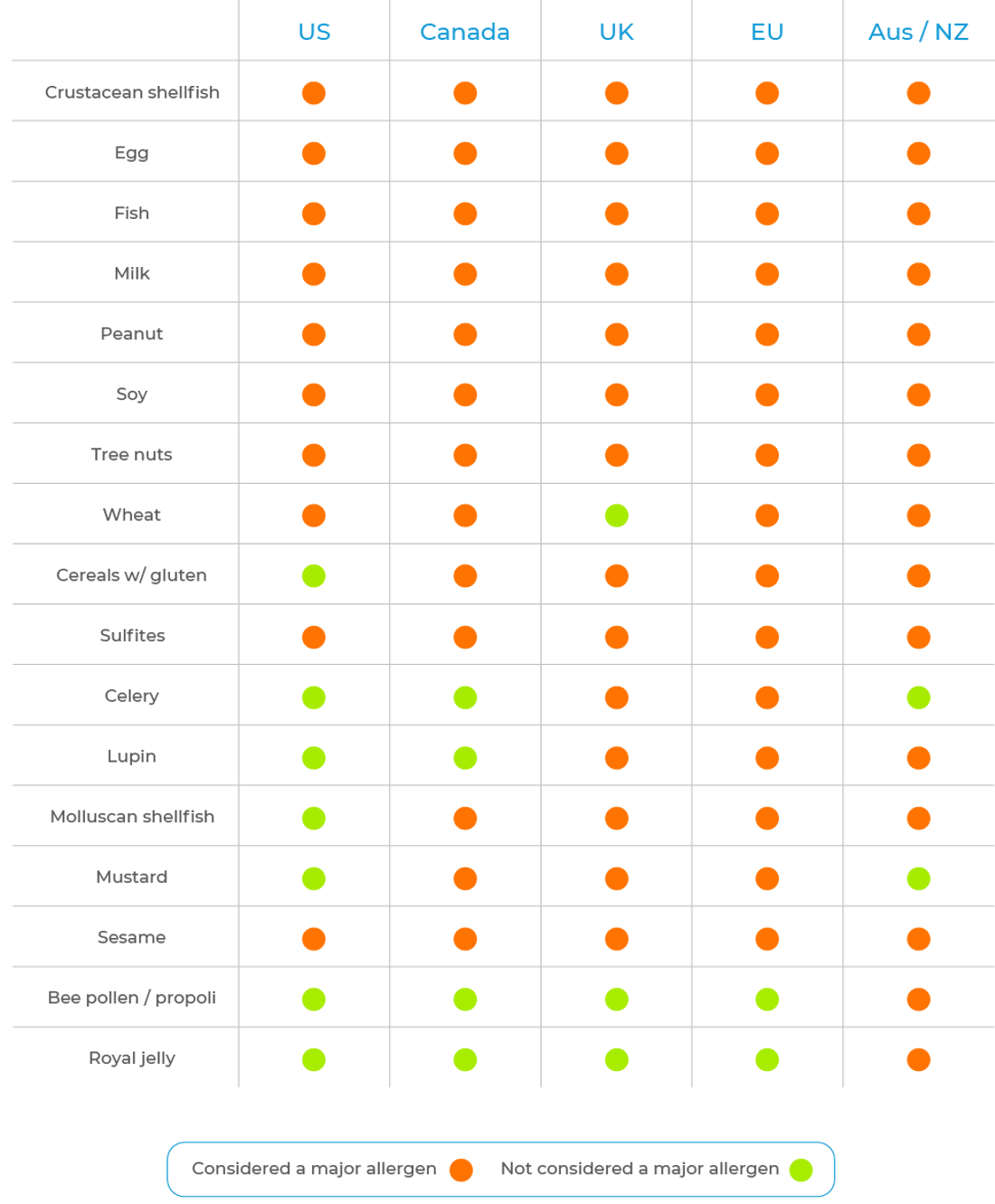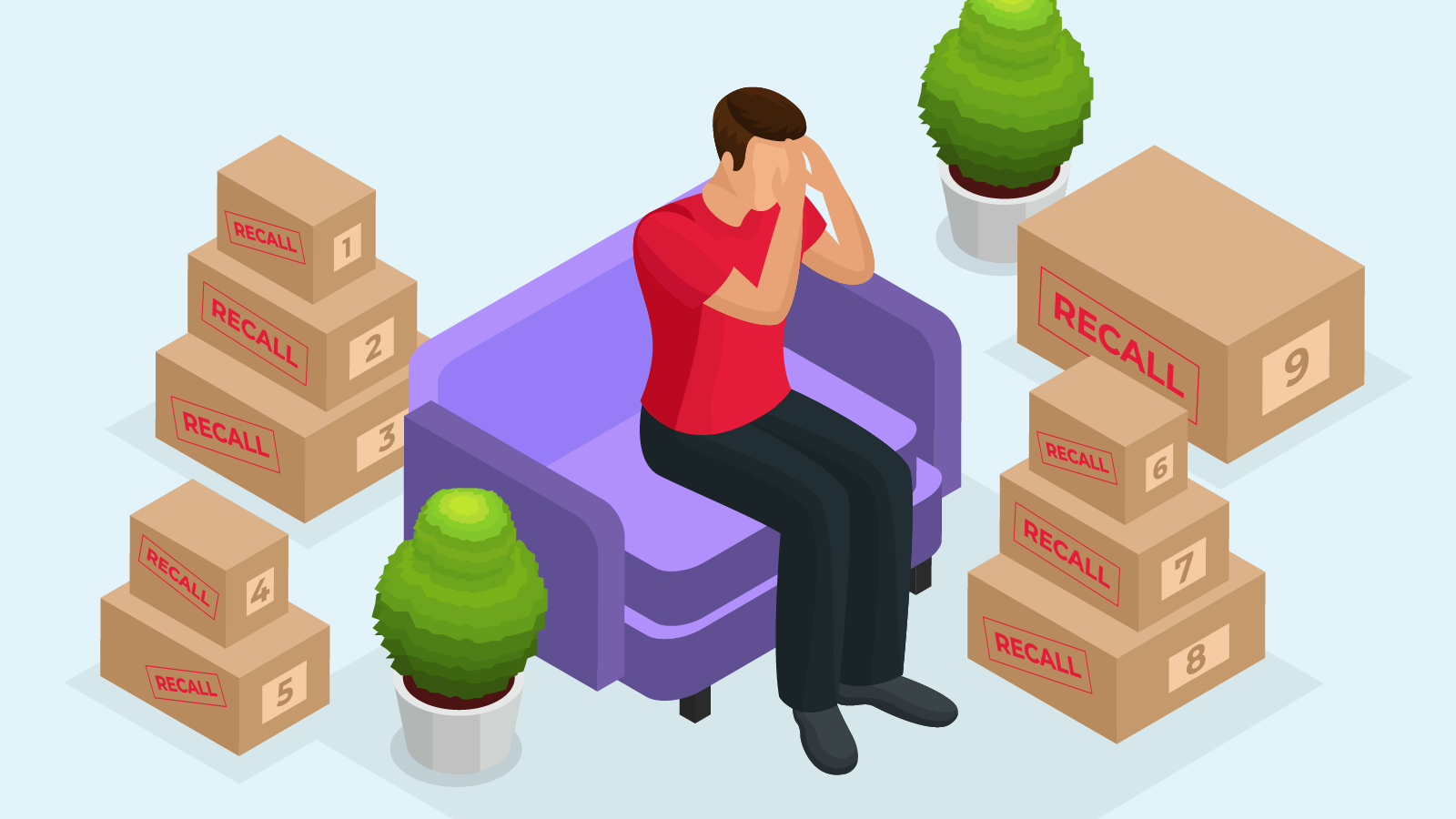Earlier this year sesame became the ninth major allergy in the US with the passing of the FASTER Act, with new labelling to be in place at the start of 2023. The move has been long campaigned for in the US, and it follows similar stances on the allergen in the UK, Canada, EU & Australia and New Zealand.
What is considered a major allergen for labelling requirements varies by territory and can be a minefield for companies who supply their products in multiple territories to navigate. For example – celery is only an allergen in the UK & EU and molluscan shellfish isn’t an allergen in the US, however crustacean shellfish is an allergen across the board. We’ve collated this information in a handy table to demonstrate the differences:

Major allergens pose a major risk for food and beverage manufacturers, as regulators become increasingly quick to react in response to any potential issues. Here are three ways allergen issues can manifest resulting in a product recall:
Undeclared
Undeclared allergen issues occur where a major allergen has not been declared, either through omission or through not being correctly emphasised on a label.
Mislabelled
Mislabelling issues can often take two forms: wrong product, wrong packaging (for example a prawn mayonnaise sandwich in a cheese sandwich box), or incorrect language, an issue that’s particularly prevalent in the UK and EU with cross border trade.
Cross-contamination
An error in the manufacturing process which could involve incorporation of the wrong ingredient, or even a contaminated supplied ingredient, which results in the accidental & unintentional incorporation of an allergen.
With allergen events occurring in various forms, and differing regulations across various territories, its important for food and beverage companies to be aware of their obligations when it comes to major allergen declaration, especially in today’s regulatory environment. Regulators are quick to respond to potential allergen events in order to prevent any potential harm, and will be heavily involved throughout the recall process. Manufacturers need to be quick to respond such incidents, removing products swiftly from the shelves, investigating the root cause to demonstrate to their consumers and the regulators that they full control of the situation with a view to preventing any further possible harm.
While manufacturers can do their best to manage their risk when it comes to allergens, through allergen control programmes, and labelling checks and controls, the potential for an event can never be entirely removed. Standalone product recall insurance provides vital first party indemnity cover for major allergen events, providing cover for recall costs, rectification & loss of sales as well as rehabilitation and crisis communication costs, and the protection it provides during a product recall event should not be underestimated.



